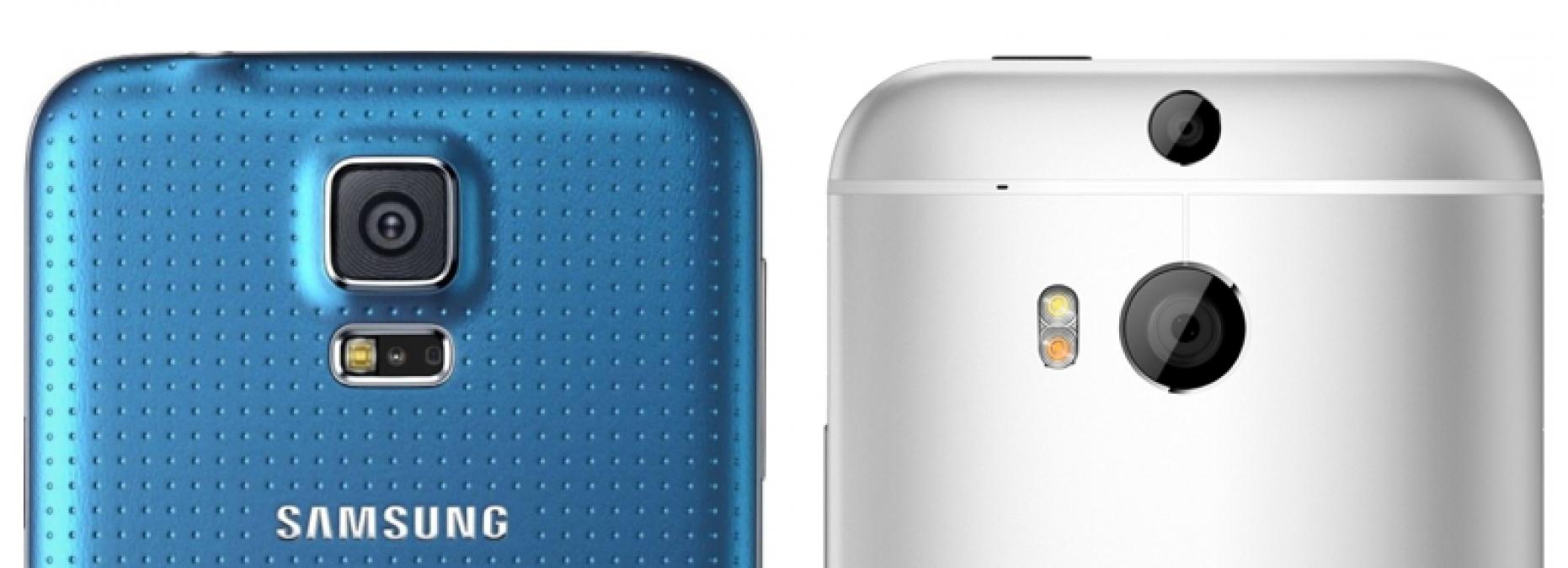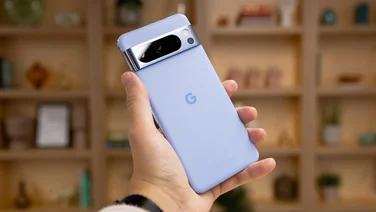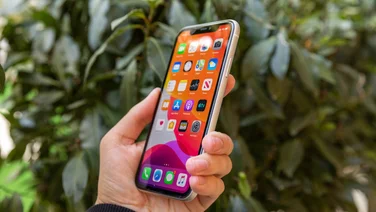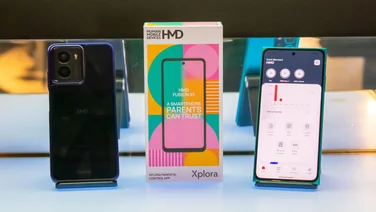To help us provide you with free impartial advice, we may earn a commission if you buy through links on our site. Learn more






2014 is already shaping up to be a great year for smartphone fans, and today we’ve pitted two of the best against each other. Samsung might have revealed the Galaxy S5 earlier than its rival at Mobile World Congress back in February, but by delaying the launch HTC was able to get the HTC One (m8) into stores much sooner. now that both eagerly-anticipated handsets are available to buy, we’ve compared the two to see which is the right phone for you.
We’ve gone beyond a mere specification comparison to highlight real world differences, as well as how they stand on paper. We’ve included benchmark figures to highlight any difference in performance and battery life, and compared camera image quality and screen clarity to give a final verdict on whether you should pick HTC or Samsung for your next smartphone.
SIZE AND WEIGHT
Materials: Ever since HTC launched the original HTC One, with its metal rear cover, Samsung’s plastic smartphones have felt a bit cheaper and toy-like in comparison. Both companies have improved in 2014. While Samsung continues to use a plastic body, build quality has improved and the S5 feels better made than the S4. We like the dimpled texture on the rear, which also makes the phone more secure to hold.
HTC has also upped its game and the HTC One (m8) now has a completely metal construction instead of an aluminium shell bonded to a plastic frame. It has a premium feel and looks absolutely gorgeous. There’s no doubt in our minds that for build quality and looks, HTC wins this battle hands-down.
Because HTC has used metal, coloured variants are harder to make. At launch the phone was limited to gunmetal grey, arctic silver and amber gold. All three looked great, although we had a slight preference for the gunmetal one. Now, HTC has introduced two new colours, red and pink. However, both versions are limited editions, with the red one only available from O2 and the pink one only available from the Carphone Warehouse.
The Galaxy S5, meanwhile, is available in four colours; black, white, blue and copper. It should be easier for Samsung to release new colours, as the rear of the phone simply pops off rather than being built into the frame. It’s also made from plastic, which will be cheap to manufacture in a selection of colours. However, given that we’re now a decent way into the product’s life-cycle it doesn’t look as though we’ll be seeing any new colours now.

The HTC One (m8) has a smaller screen, but is larger than the Galaxy S5 because of its BoomSound speakers
Dimensions: The HTC One (m8) is unsurprisingly heavier than the Galaxy S5, weighing in at 160g to Samsung’s 145g. You’re unlikely to notice much difference in day-to-day use, however. At 146x70x9.4mm, the m8 is both taller and thicker than the Galaxy S5’s 142x72x8.1mm dimensions, despite having a slightly smaller screen; this is to make room for the front-facing BoomSound speakers, whereas the Galaxy S5 makes do with rear-facing speakers that could get muffled in your hand.
SCREEN
Screen size: The HTC One (m8) has a 5in display, which is already larger than most standard smartphones from 2013 and big enough that little hands will struggle to reach every part of with one hand. The Galaxy S5 has an even bigger 5.1in display, although it may be easier to reach more of the screen because there are no speaker grilles on the front – meaning the entire phone is slightly shorter than the HTC. Both phones are protected from scratches and scrapes by Corning Gorilla Glass 3.

Different screen technologies mean it will be difficult to pick a winner
Resolution: Both the Galaxy S5 and the HTC One (m8) have 1,920×1,080 Full HD resolution displays, but because the S5 has a slightly bigger screen, it has a lower pixel density. Whereas the m8 has a pixel density of 441 pixels per inch (PPI), the S5 only has 431ppi. In practice, the difference is unnoticeable, as both phones have pixel densities much higher than the point where it becomes possible to see individual pixels with the naked eye.
Screen technology: The HTC One (m8) uses a SuperLCD 3 panel, which eliminates the air gap between panel and glass to reduce internal reflections. It uses a backlight to illuminate the screen, meaning it should be able to produce brighter images and whiter whites than OLED screens.
Samsung has used an AMOLED display for the Galaxy S5, which means each individual pixel is illuminated separately. With no need for a backlight, it should be less power hungry than the m8’s LCD display, especially when displaying predominantly black images. Blacks should also appear much deeper than on LCD, producing superior contrast.
However, while Samsung’s AMOLED phones use Pentile displays with diamond-arranged sub pixels, HTC uses three sub-pixels for every pixel, which makes everything sharper. Both technologies are now excellent, and on the best phones it’s largely a matter of personal preference between the two.
In real world use, the m8 produces whiter whites and is visibly brighter, although the S5 makes darker images look incredibly vivid thanks to the AMOLED panel.
PERFORMANCE
Processor: Both the HTC One (m8) and the Galaxy S5 use the latest and fastest Qualcomm Snapdragon 801 processor, although it only runs at 2.3GHz in the HTC compared to 2.5GHz in the Samsung. This will almost certainly translate to faster benchmark scores in the Galaxy S5: it completed the SunSpider JavaScript browser test in 408ms but the HTC One (m8) could only manage 640ms, although this is still an incredibly fast score for an Android smartphone.

Textured plastic versus brushed metal – is there any contest?
Graphics: As both phones use the same system-on-chip (SoC) it should come as no surprise they use the same Qualcomm Adreno 330 GPU. It should easily play any of the games available on the Google Play Store with a smooth frame rate. We expected the S5’s faster processor to help it achieve better scores than the m8, but in the 3DMark Ice Storm Unlimited test it only scored 18,438. The HTC managed 20,465, although it’s important to note the Galaxy S5 we tried during the launch event was a pre-release test sample and may not be indicative of the final product.
Memory: The HTC One and Galaxy S4 were among the first Android smartphones to ship with 2GB of RAM, and both companies have decided that is an ample amount for a flagship smartphone; both the HTC One m8 and Galaxy S5 will ship with 2GB of RAM.
Storage: In previous years Samsung smartphones had an advantage over HTC handsets because they shipped with a microSD card slot. HTC has now closed that gap, with both the HTC One (m8) and Galaxy S5 including expandable storage. They each support the largest 128GB microSD cards, so you shouldn’t ever run out of storage space for music, video or photos.
Internally, both phones will be available with either 16GB or 32GB of non-replaceable storage.
Battery: On paper, the Galaxy S5 has the advantage when it comes to battery life, thanks to a 2,800mAh internal battery. This, combined with the energy efficient AMOLED screen, should help it last for up to 390 hours in standby or for up to 21 hours of talk time (according to Samsung).
However, it isn’t quite that simple. The m8 may have a smaller 2,600mAh battery but its CPU runs at a slower speed and it has a slightly smaller screen, which could offset the benefits of AMOLED. HTC says it will last up to 496 hours in standby mode and can manage up to 20 hours of talk time. Unfortunately, the numbers don’t lie, and while the m8 lasted around 13 hours 28 minutes in our video rundown test, the Galaxy S5 lasted an impeccable 17 hours 30 minutes.
CAMERA
Besides screen technology and construction materials, the biggest difference between the HTC One (m8) and Galaxy S5 is the rear camera. HTC uses an Ultrapixel sensor, with larger pixels for less picture noise than a similarly-sized sensor with more megapixels. The 4-Ultrapixel camera has a 1/3in sensor with 2µm pixels, significantly larger than most other smartphone cameras. It also has an f/2.0 aperture lens to capture as much light as possible per shot. It captures 2,592х1,944 stills and records 1080p video at 30fps.

Both phones can refocus your images after you press the shutter, but the m8 is quicker thanks to its dual cameras
This is paired with a second, depth-sensing camera to add depth of field effects and to choose the point of focus after you’ve taken a photo. It also uses a dual LED True-Tone flash, which automatically matches the intensity and shade of the flash to the scene being photographed.

HTC’s refocus is always available after you’ve taken a shot (as long as you aren’t using a specific shooting mode which disables it) and adds no extra processing time between shots. Once you’re happy with your image, you can tap anywhere to refocus – you aren’t limited to one or two points of focus, and can specify any part of a shot to make the main focal point of the image. The effect isn’t perfect, though, as the edges of some objects can end up blurred accidentally.
Samsung has opted to increase the pixel count, rather than use bigger pixels in the Galaxy S5. It has a 1/2.6in sensor with smaller 1.12µm pixels, but a maximum 16-megapixel capture. It uses ISOCELL sensor technology, which improves dynamic range by preventing light leaking from one pixel to another. It shoots 4,640×3,480 (16.15-megapixel) stills and records 1080p video at 60fps. It is paired with a standard LED flash.
It is also able to record Ultra HD (4K) 3,840×2,160 video at 30fps, which isn’t possible on the HTC One (m8), although you’ll need a 4K TV or monitor to play back your footage at its native resolution.

You can also refocus your images after you’ve taken them on the Galaxy S5, but only if you use a specific camera mode. This takes five exposures in succession, adjusting the focal point for each one, so you can choose what to keep in focus and what to blur. However, because this is a software technique rather than hardware, it takes a lot longer than the m8 – three to four seconds per image, whereas the m8 takes less than a second per shot. You also only have three focus choices; near, far and pan. The latter keeps everything in your shot in focus, while the first two let you be a bit more creative with your images.

Outdoors, the Galaxy S5 does a fantastic job at producing evenly lit images
Throughout our testing, the Galaxy S5 impressed with its ability to capture outdoor scenes without overexposure. The 16-megapixel image sensor captures an extraordinary amount of detail, even in landscape shots, although zooming beyond 50% reveals a fair amount of noise. For uploading to Facebook or Twitter, however, the noise is all but unnoticeable. Things improve further with High Dynamic Range (HDR) mode enabled, with images looking more even, detail found in grey skies and colours appearing more lifelike. The HDR effect is pleasantly subtle too, unlike HTC’s overblown implementation.

The HTC One (m8) struggles with muted colours, although it captures a reasonable amount of detail
Given the same lightning conditions, we were surprised at just how different images taken with the HTC One (m8) appeared. Although there’s still plenty of detail, despite having fewer pixels than the S5, colours were incredibly muted and the sky in our outdoor test shot shows signs of over-exposure. Things improve when you move indoors, but overall the Galaxy S5 has the edge in terms of picture quality.
The HTC One (m8) has a more impressive front-facing camera on paper. Whereas the Galaxy S5 only has a 2-megapixel webcam, the m8 has a 5.0-megapixel camera paired with the same f/2.0 aperture lens as the rear-facing camera for improved low-light capture.
FEATURES
Aside from its camera, the HTC One (m8) is a very by-the-numbers update to the original One. The only other major addition is the bespoke Smart sensor which keeps the accelerometer and touchscreen active in a very low power state, to help track your exercise and to add a range of motion gestures to the phone. That means you can wake the phone with a double tap, turn it sideways and press the volume key to jump straight into the camera app, or swipe to the left to go straight into Blinkfeed. It also comes with the Fitbit health monitoring app pre-installed, letting you use the accelerometer to track your steps without significantly draining the battery.
Moving onto the Galaxy S5, Samsung has added a whole host of new features which helps set it apart from the competition. It is now dust- and water-resistant (although not waterproof like Sony’s Xperia Z2), and is more secure thanks to a fingerprint sensor built into the home button. It’s used for more than just unlocking the device, like the TouchID sensor found in Apple’s iPhone 5s; you can authorise paypal payments and secure files or folders so only you can access them.
It is also much more focused on health, with an integrated heart rate monitor on the back of the phone to track your pulse when on the move. It ties in with Samsung’s S Health app, which includes exercise tracking, food diaries and weight tracking.
WEARABLE TECH
Samsung has built in compatibility with its range of wearable tech, including the Gear 2, Gear 2 Neo and Gear Fit. None of these devices will work with the HTC One (m8), only the Galaxy S5. That’s definitely a bonus in Samsung’s favour, as its wearable devices are some of the best that you can currently buy. That’s not to say that HTC is left out in the cold and things are changing, particularly with the Android Wear OS, which makes it easy for manufacturers to make smartwatches that are compatible with any Android device.
At the moment we’ve only seen the rather basic LG G Watch. Things are looking up, with the circular LG G Watch R and Moto 360 due out soon. With Android Wear, it’s a much more open and level playing field. Of course, on top of that, any fitness kit that will work with Android will work with both of these watches.
SOFTWARE
Android Both the HTC One (m8) and Galaxy S5 shipped with the 4.4.2 KitKat build of Google’s Android operating system, although both have since received an update to Android Lollipop. Given that both companies overhaul the OS to add their own UI, you don’t notice a big change on either handset with the upgrade from KitKat to Lollipop.
Under the surface, things are different, with both handsets getting the new task switcher and notifications bar. Both also introduce the new search option in Settings, which is a real boon for anyone that’s spent hours trying to find the right menu in order to change something.
We upgraded our unlocked Samsung Galaxy S5 and HTC One (m8) to Lollipop and haven’t noticed any stability or battery issues with either handset. Some people have complained of some issues, but we can’t verify these based on our experiences.

Are you going to notice an extra millimetre in your pocket?
Custom UI (Sense, Touchwiz) Besides hardware differences, the other way Android handset manufacturers make their smartphones stand out is with a custom user interface. For the m8, HTC has upgraded its Sense UI to version 6, completely redesigning the icons, fonts and layout to coincide with the new phone. You still get Blinkfeed, but other areas have only been slightly tweaked from the standard Android layout, including the quick settings menu. HTC has also switched from physical buttons to on screen virtual buttons, which again is a closer match to how Google actually intends Android to be used.
Samsung has also overhauled its Touchwiz UI, redesigning icons with a flatter look to match the one adopted by Google for Android 4.4 KitKat. The quick settings menu now looks very different from standard Android, and Samsung still relies on physical hardware buttons which flies in the face of Google’s design documents for Android.
4G and Wi-Fi
Both the Galaxy S5 and HTC One (m8) support all major 2G, 3G and 4G LTE frequency bands, including the faster LTE Category 4 should your mobile network use it.
Most other wireless technologies appear to be the same on both phones as well. They both have 802.11ac Wi-Fi, Bluetooth 4.0, NFC, GPS and GLONASS geo-location, and an Infra-red blaster for controlling TVs or other home cinema equipment. The S5 supports dual-band Wi-Fi, which could give it the edge in wireless transfer speeds.
Internally, the m8 opts for the newer, smaller nano-SIM standard, as opposed to S5 which uses the more familiar micro-SIM. The m8 has a standard micro USB charging port, while the Galaxy S5 uses a USB3 port. You can still use regular USB2 cables with the S5, but it will charge and transfer data faster with USB3.
VERDICT
Choosing between the Galaxy S5 and HTC One (m8) will depend heavily on what you want from your smartphone. If looks, build quality and premium materials are important, the m8 wins hands down – the all-metal construction is simply gorgeous and is miles ahead of the S5’s plastic finish. However, performance is slightly behind the S5 and the dual camera is novel rather than a crucial addition. Samsung’s flagship smartphone takes better quality photos, and has a much greater emphasis on fitness. The Gear wearables range is currently exclusively tied to Galaxy handsets too, so if you want an official smartwatch it’s your only option.
Ultimately, both phones are worthy of their flagship status, and with so little in it you’ll be happy no matter which handset you opt for.
SPECS
| Manufacturer | Samsung | HTC |
| Model | Galaxy S5 | One (m8) |
| HARDWARE | ||
|---|---|---|
| Processor | Quad-core 2.5GHz Qualcomm Snapdragon 801 | Quad-core 2.3Ghz Qualcomm Snapdragon 801 |
| RAM | 2GB | 2GB |
| Screen size | 5.1in | 5in |
| Screen resolution | 1,920×1,080 | 1,920×1,080 |
| Screen type | AMOLED | SuperLCD 3 |
| Front camera | 2-megapixel | 5-megapixel |
| Rear camera | 16-megapixel | 4-Ultrapixel |
| Flash | LED | LED |
| GPS | Yes | Yes |
| Compass | Yes | Yes |
| Storage | 16GB | 16/32GB |
| Memory card slot (supplied) | MicroSD | MicroSD |
| Wi-Fi | 802.11ac | 802.11ac |
| Bluetooth | Bluetooth 4.0 | Bluetooth 4.0 |
| NFC | Yes | Yes |
| Wireless data | 4G | 4G |
| Size | 142×72.5×8.1 mm | 146.4×70.6×9.4 mm |
| Weight | 145g | 160g |
| FEATURES | ||
| Operating system | Android 4.4 (KitKat) | Android 4.4 (KitKat) |
| Battery size | 2,800mAh | 2,600mAh |
| BUYING INFORMATION | ||
| Price SIM-free (inc VAT) | £560 | £530 |
| Details | www.samsung.co.uk | www.htc.co.uk |
| Part code | SM-G900F | One (m8) |




